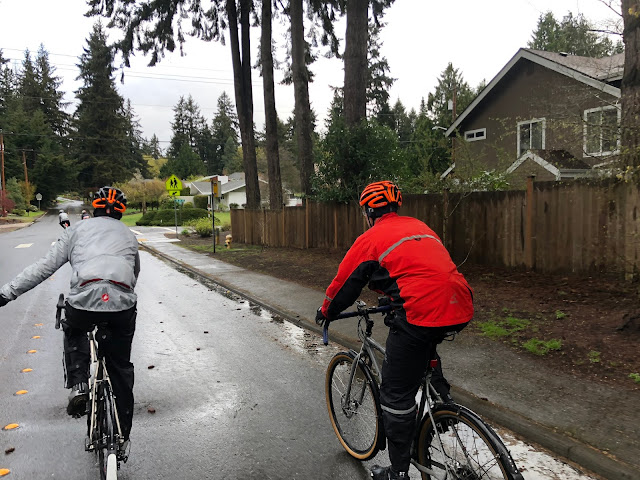Not everything is as it seems. I have received nothing
but positive feedback from my post entitled, “Myth # 2, your tires need to be
inflated” that when you remove air from the tire it becomes lighter which
naturally makes it faster at the same time.
So simple yet so profound.
Today we challenge the assumption that round tires are
faster. There was a study done by the German magazine, “Der Spiegel” that used
a metal drum to measure rolling resistance.
Like many of you I only ride on metal drums when it rains. What about the “real world” situations we all
encounter? Is a round wheel always the
right choice?
Let’s look at the photograph below. As you can see the rider is riding over rolls
of fabric. A round wheel would just get
stuck whereas the square wheel is able to ride up and over the humps with
ease. What are our roads, if not an
assembly of humps and imperfections? For
those situations a round wheel will be out performed by the square wheel every
time.
Since most of us don’t live in a laboratory, knowing what
works in the real world is what counts. As
a point of reference, I see plenty of men riding in polyester cycling jerseys.
“Fools,” I say to my companions, “Fools!” Our group of testers has found that
wool jerseys have the ability to store energy for use later.
Let’s say you are riding uphill in a polyester
jersey. As you warm up you might start
to sweat a little. The jersey wicks the
sweat away, cooling you down and you continue to ride to the top and when you
go down, your jersey dries quickly and you are warm on the descent. This is
what you get for being a fool.
The experienced rider wearing a wool jersey on the climb
starts to sweat much earlier. The wool
absorbs the sweat and begins to stink.
The stink makes the rider go harder and increases the sweating. By the time the wool-wearing rider reaches the top his
jersey has a good pound or two of sweat in it and that added weight helps speed
the rider on the descent. The ability of
wool to store the riders sweat and use it as ballast on the descent is
something polyester can’t do. I can’t
imagine why all the pro cyclists aren’t wearing floppy rag wool sweaters. By the way, in my post entitled, “Myth #1 Aerodynamics
are more important than drag” we see that riders in loose fitting wool are, in
fact, much faster than riders in Lycra.
These people just smell like S P E E D
Alas, like a doddering old man my mind has wandered and
there is nobody here to slap me back to reality. Perhaps I could benefit from a fact
checker. Just kidding. Who needs facts when you have a monopoly on
wool?
Back to the square wheels.
What happens to a square wheel on a smoother road at high
speeds? We have all seen how the latest
versions of The America’s Cup boats get up on a hydrofoil the size of a canoe
paddle. As they go faster they need less
contact with the water. At high speeds
only the corners of the square wheels will be in contact with the ground. This hydrofoil effect will allow a cyclist to
maintain top speeds with less effort.
As an added benefit the square wheel will “capture” the
air between the corners and it will serve as a cushion as it is compressed by
the rolling wheel, smoothing out the contact of the next corner. As the wheel goes faster the cushion gets
firmer and firmer. Soon the rider is
gliding along, barely touching the ground at all. Once airborne the
imperfections of the road are irrelevant.
Once you understand that square wheels are faster on
rough and smooth roads you will never go back to round wheels.












